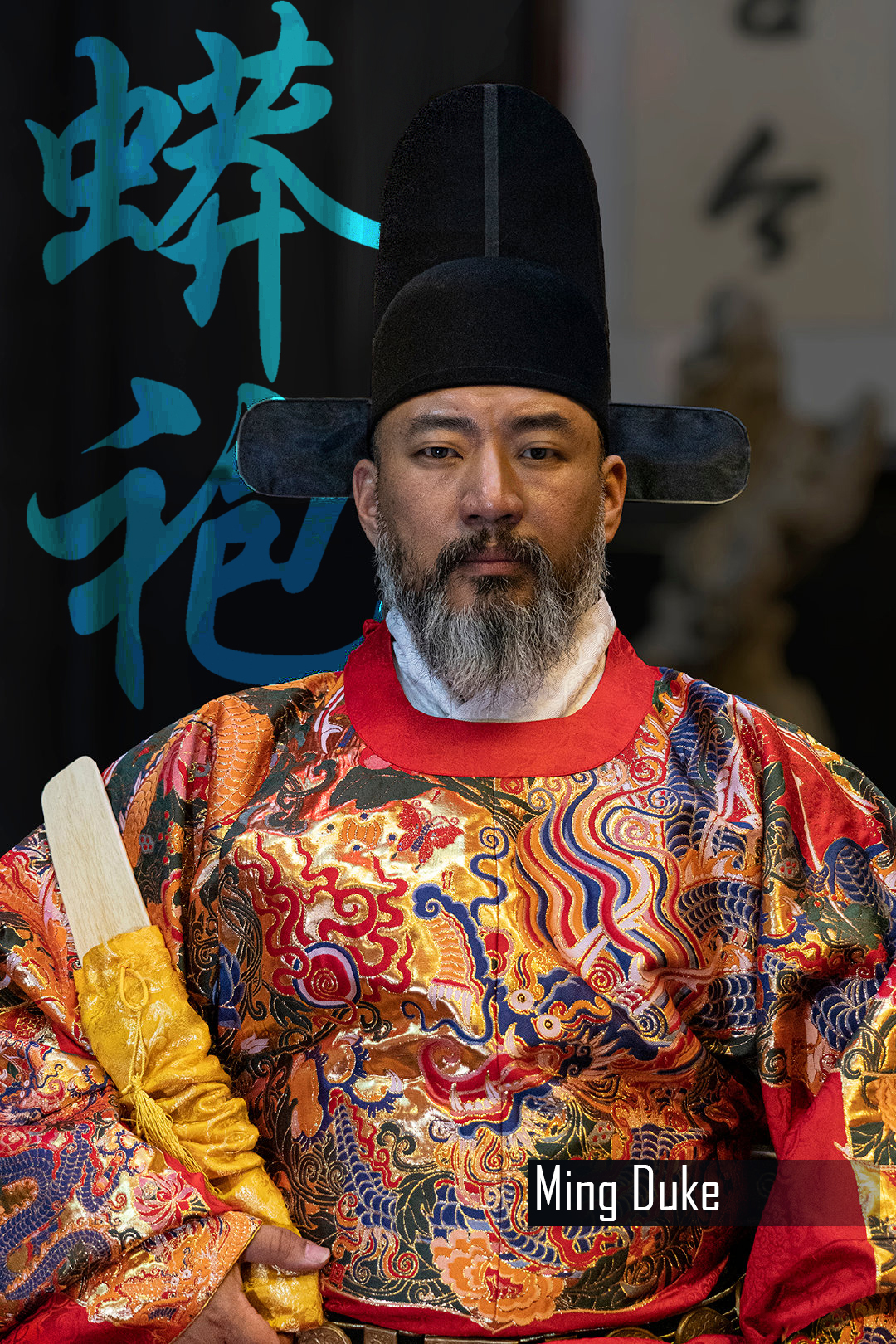Jin Dynasty (265-420) Captain 晋朝武官
A Jin dynasty (265-420) infantry captain, he wears a blackened fishscale armor with flexible sleeves. But unlike his cavalry counter parts, does not wear extended armored collars to protect his neck, nor have long draping scale faulds to protect his legs. In stead he opts to wear long trousers (robe) for greater mobility. To compensate for his diminished protection, he is equipped with a long two handed steel sword. Which by the late Han period would have been treated with blast furnace. The length of these swords varies from shoulder height to the length of a short spear. He is also equipped with a recurve composite bow and a quiver. (Unlike his previous version this one does not have a hair veil)
Depiction of a warrior (marked by his large lacquered shield) fighting against rows of northern Chinese cataphracts, where the rider and the horse were completely encased in lamellar armor
4-7th century Chinese helmet, nose pieces began o appear throughout the Jin- Northern and
Southern dynasties.
Western Han "Fish scale" armor, compared with the scale armor of the Dark Ages in Europe, these possessed more flexible pauldrons, Also~ because of the small and intricate overlay of the scales (when compared with the large, finger lengthed scales of the Dark Age armies,) it can well stand jabs and stabs directed from below and protect the wearer's armpits (a common trick when fighting opponents with scale armor is to jab from below where the scales offer no protection) ~ which makes these armor excellent for cavalry. An elite version of heavy armor became prominent during the three kingdoms period called "Hundred-Beaten Steel" Armor.
Helmet and horse armor of the Northern and Southern Dynasties (Northern) Notice the armored leg fauld of the rider.
Chanfron and barding (horse armor) of a 4th-7th century Chinese cataphract, the distinctive 寄生 "Jisheng" (Lit. "Parasite")- Large decorative plumes attached to the back of the horse armor. In a role similar to the Sashimono or Horo of the samurai, they served to not only marking the rank and station of the armored riders, but also according to some sources served to deflect projectiles fired from behind the horsemen. They appeared during the late Jin- Sixteen Kingdoms period preceding the Northern and Southern dynasties and were ubiquitously seen in the first half of the 6th century.
TWO HANDED STEEL SWORD
Qin dynasty two handed sword. The earliest two handed swords were
guardless and often forged from hardened bronze and crude iron, however by
the Han dynasty, these steel swords would have been treated with blast
furnace technology. They were so ubiquitously deployed that many excavated
Han two handed swords were auctioned off to private collectors.
Later era Han soldiers (especially Eastern Han Dynasty) would be armed with the long two handed 环首刀 or "Ring Sword" because of the distinctive pommel (which would be decorated with gilded bird or phoenix motifs for ranking officers. These swords would develop later into the curved Tang swords that in Japan would permunate into the famous katana 刀
Eastern Han dynasty Terracottas, displaying soldiers in scale aventail and lamellar cuirass
Each is also provided with a lacquered fighting shield.
Eastern-Han golden belt hook, curvalinear design influenced by the steppe culture, hammered and chiseled with designs of mythical animals and birds
Sui Dynasty two handed swords carried by guards/ military governors
The tradition of carrying these huge blades did not end until the early
Tang dynasty.
For more on the history of the Jin dynasty and the extremely chaotic three centuries of Balkanized anarchy that followed its collapse, please check out my articles on the Northern and Southern dynasties. Where I talked about not only the history and the achievement of the major players in these extremely chaotic (and confusing) centuries. But where I also talk about the military strength that made each of the regions unmatched in their native terrain. Please have a look!

→ ☯ [Please support my work at Patreon] ☯ ←
Thank you to my Patrons who has contributed $10 and above:
You helped make this happen!
➢ ☯ José Luis Fernández-Blanco
➢ ☯ Stephen D Rynerson
➢ ☯ Michael Lam
➢ ☯ SRS (Mr. U)





























Comments